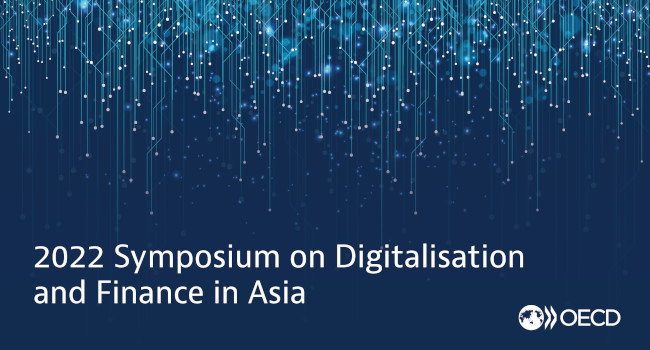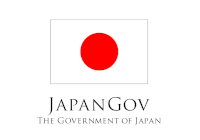Financial markets
2022 Symposium on Digitalisation and Finance in Asia

 6-7 December 2022
6-7 December 2022  In-person event - Tokyo, Japan
In-person event - Tokyo, Japan
|
Digital assets have increasingly gained interest from financial markets participants and citizens given the rapid development of crypto-asset markets and decentralised finance (DeFi), which reached USD 3tn as of end of 2021. Bitcoin and other digital assets are increasingly becoming part of mainstream financial markets, with growing interconnectedness between traditional (TradFi) and decentralised finance market. More scrutiny is therefore warranted across all aspects of this market, including in relation to its environmental impact, in particular around the validation of transactions and associated Bitcoin crypto-mining which is the key driver of carbon footprint of blockchain-based finance today. Markets for crypto-assets suffered an intense downturn in 2022, known as the ‘crypto-winter’, with severe impact on retail investors, who suffered total loss of investment without any recourse. At the same time, progress is being made on CBDC pilots at the national and cross-border level, and on the associated policy implications discussion. Building on the work of the Committee on Financial Markets’ Experts Group on Finance and Digitalisation, this Symposium aims to share knowledge about developments and policy frameworks around the use of financial technologies in finance, in order to harness benefits while addressing risks, as well as to disseminate good practices in the Asian region and beyond. The Symposium brings together high-ranking officials from finance ministries/treasuries, central banks and securities regulators from Asian and OECD member countries, as well as experts from international organisations, private sector representatives and academics. This event is organised in collaboration with Asian Development Bank Institute. 
Symposium Sessions
DAY 1 - TUESDAY 6 December 2022Opening Remarks SESSION 1: Digital assets: learnings from the crypto-winter, evolution of stablecoins and CBDCs The recent downturn in valuations of major crypto-assets triggered failures of crypto-asset firms, which in turn further intensified and aggravated the crypto-market sell-off. The domino effect that was triggered by the Terra’s UST so-called stablecoin failure against the background of a prolonged crypto-asset market downturn (known as crypto-winter) in the first half of 2022 has had a severe impact on retail crypto-asset market participants, many of who suffered total loss of investment without any recourse. The regulatory effort to address possible gaps in markets for digital assets has accelerated in recent months: Japan enacted a bill defining the legal status of stablecoins in June 2022, making it the first major economy to enact such legislation. In the European Union, the European Council approved a comprehensive Markets in Crypto-Assets (MiCA) regulation on 5 Oct 2022, while the White House released in September 2022 the first-ever Comprehensive Framework for Responsible Development of Digital Assets. In parallel, more than 100 countries are experimenting with CBDCs in pilot projects that have started to produce results, while a handful of these projects have gone live. What can we learn from the recent crypto-winter in terms of advantages and pitfalls of the technologies and mechanisms that underpin such structures for investors, consumers and the markets? How do CBDCs address similar needs and what are the design characteristics that maximise potential benefits while minimising risks? SESSION 2: Policy approaches to True DeFi The Decentralised Finance (DeFi) market has already experienced its first full cycle of activity. Following a 50-fold increase in the value of crypto-assets reported by industry sources to be locked in DeFi protocols in the 2020-21 period, with a peak of USD 110 bn locked in Ethereum-based protocols in November 2021, DeFi lost more than half of its size in the recent 2022 crypto-asset downturn. The vast majority of today’s DeFi activity is ‘decentralised in name only’ and has clear centralised characteristics of control of the protocol or of users’ assets (e.g. centralised holdings of governance tokens or rents derived by known beneficiaries). In the future, however, true decentralised finance may develop further and have the potential to drive a paradigm shift, involving new ways of performing financial activity instead of just deploying new technologies to replicate forms of traditional market-based finance. Decentralisation is a spectrum, and it is dynamic. Regulation, oversight and enforcement will need to account for that. An international coordinated approach towards policy making of what has been discussed in this note as ‘true’ decentralised finance would need to be pursued at the cross-border level to address opportunities for regulatory arbitrage and prevent a ‘race-to-the-bottom’. This risk is particularly pertinent in DeFi, given the speed and ease with which decentralised systems are able to change their claimed geographic base. International cooperation would also need to be pursued at the supervisory level to assist enforcement action or oversight of activities with no identified jurisdiction or geographical location. Multi-stakeholder cooperation may be warranted in true DeFi markets given the absence of regulatory and supervisory access points; the level of complexity of innovation involved in such structures; the critical role of software developers in this space; and the novel governance mechanisms involved. DAY 2 - Wednesday 7 December 2022SESSION 3: The environmental impact of digital assets and crypto Digital assets have increasingly gained interest from financial markets participants and citizens given the rapid development of crypto-asset markets, which reached USD 3tn as of end of 2021. In parallel, environmental, social, and governance (ESG) factors have risen to become a priority for policy makers, and great societal awareness of the urgent need for action on climate and sustainability issues. The infrastructure supporting crypto-assets such as Bitcoin uses an enormous amount of energy, the quantity of which rivals the energy consumption of certain small nations. The use of renewable energy is not sufficient to curb the negative externalities given the opportunity cost for the use of renewables elsewhere in society, especially given current geopolitical conditions.Bitcoin and other digital assets are increasingly becoming part of mainstream financial markets, given growing interconnectedness of DeFi-TradFi. More scrutiny is therefore warranted across all aspects of this market, including in relation to its environmental impact. Proof-of-Work (PoW) consensus mechanisms for the validation of transactions and associated crypto-mining are the key drivers of the carbon footprint of blockchain-based finance. Given the carbon footprint and associated climate transition risks of certain digital assets, combined with negative externalities extending to the wider society, policy consideration and potential policy action is warranted.Closing Remarks |
|
DOCUMENTS AND LINKS
CONTACTSIota.NASSR@oecd.org Robert.PATALANO@oecd.org Masao.YAHARA@oecd.org Axelle.JULIN@oecd.org
|

This event is sponsored by the Government of Japan.
Related Documents